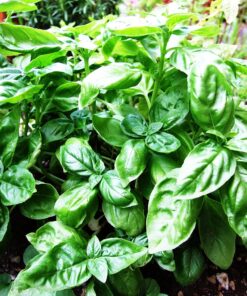How to Grow Sage from Seed: A Step-by-Step Guide
Sage Seeds is a versatile herb that adds flavor to dishes and offers medicinal benefits. Growing it from seed takes patience, but the rewards are worth it. Follow this step-by-step guide to cultivate healthy sage plants successfully.
| Number of seeds | 30 |
|---|---|
| Sowing month | Feb to Nov |
| Harvest | 45 to 75 days |
| Sun | Full Sun |
| Sowing Temperature | Day time above 25C |
Choosing the Right Seeds
Sage Seeds First, select high-quality sage seeds from a reputable supplier. Check the packaging for freshness, as older seeds may have lower germination rates. Common sage (Salvia officinalis) is the most popular variety, but other options like purple or golden sage also thrive from seed.
Preparing the Soil
Next, choose a well-draining soil mix. Sage prefers sandy or loamy soil with a neutral to slightly alkaline pH. To improve drainage, add perlite or sand to the mix. If planting in the ground, ensure the soil is loose and free from weeds.
Sage Seeds Planting the Seeds
Now, fill a seed tray or small pots with the prepared soil. Sprinkle the seeds lightly on the surface, then cover them with a thin layer of soil. Press gently to ensure contact but avoid burying them too deeply. Water the soil lightly to keep it moist but not soggy.
Sage Seeds Providing the Right Conditions
Since sage needs warmth to germinate, maintain a temperature between 60-70°F (15-21°C). Place the seed tray in a bright location with indirect sunlight. If necessary, use a heating mat to maintain consistent warmth. Expect germination to take 10-21 days.
Caring for Seedlings
Sage Seeds Once the seedlings emerge, provide adequate light. A sunny windowsill or grow light works well. Water them sparingly, as sage dislikes excessive moisture. When the seedlings develop two sets of true leaves, thin them by removing weaker ones to allow stronger plants to thrive.
Transplanting Sage
After the last frost, transplant sage outdoors or into larger containers. Choose a sunny spot with well-draining soil. Space the plants about 18-24 inches apart to ensure good airflow. Water them lightly after transplanting to help establish roots. aparajita Lavender double shares same weather condition
Maintaining Healthy Growth
Sage Seeds To encourage bushy growth, pinch off the tips of young plants. Water deeply but infrequently, allowing the soil to dry between watering. Avoid over-fertilizing, as sage grows best in lean soil. Additionally, trim back any woody stems in early spring to promote fresh growth.
Harvesting and Using Sage
Once the plant reaches maturity, start harvesting leaves. Pick only a few at a time to keep the plant healthy. Fresh leaves enhance dishes like soups, meats, and teas. For long-term storage, dry the leaves by hanging them in a warm, dry place. Methi can be good companion
Conclusion
Growing sage from seed requires patience, but the process is straightforward. With the right conditions and care, you can enjoy fresh, homegrown sage for cooking and medicinal uses. Start your sage garden today and reap the benefits of this hardy herb!
| Color | Green |
|---|---|
| Germination Level | Easy |
| Growth Pattern | Up right Straight |
| Hybrid or Open Pollinated | Open Pollinated |
| Ideal location | Partial Sun |
| Origin Country | India |
Be the first to review “Sage Seeds Broad leaf herb pack of 25-30 seeds” Cancel reply
You must be logged in to post a review.

















Reviews
There are no reviews yet.